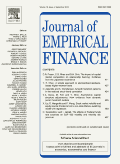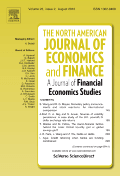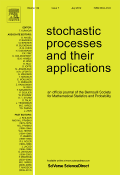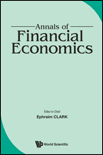
SIAM Journal on Financial Mathematics
Scope & Guideline
Exploring the Mathematical Foundations of Finance
Introduction
Aims and Scopes
- Risk Measurement and Management:
The journal emphasizes the development and application of mathematical models for measuring and managing financial risk, including advanced risk measures and their implications in various market conditions. - Optimal Investment Strategies:
A core focus is on optimizing investment decisions under uncertainty, taking into account various constraints and objectives, such as utility maximization and risk aversion. - Market Dynamics and Pricing Models:
The journal publishes research on modeling market dynamics, including the pricing of complex financial derivatives, stochastic volatility models, and the effects of market microstructure. - Statistical Arbitrage and Machine Learning:
There is a growing interest in statistical arbitrage strategies and the use of machine learning techniques to enhance financial decision-making and predictive analytics. - Behavioral Finance and Decision Theory:
The intersection of behavioral finance and mathematical modeling is explored, particularly how irrational behavior impacts market outcomes and investment strategies.
Trending and Emerging
- Deep Learning and Advanced Algorithms:
The use of deep learning and other advanced algorithms for financial modeling and prediction is on the rise, showcasing the integration of artificial intelligence in finance. - Dynamic and Stochastic Modeling:
There is a growing trend towards dynamic and stochastic modeling approaches, which incorporate time-varying parameters and processes to better reflect market realities. - Behavioral Insights in Financial Decision-Making:
Research is increasingly exploring the implications of behavioral finance on investment decisions, highlighting how psychological factors influence market outcomes. - Multidimensional Risk Assessment:
The exploration of multidimensional risk measures and their applications in complex financial systems is gaining momentum, reflecting the need for comprehensive risk management strategies. - Cross-Disciplinary Approaches:
Emerging themes include cross-disciplinary approaches that combine insights from economics, statistics, and computational techniques to address complex financial problems.
Declining or Waning
- Traditional Mean-Variance Optimization:
There has been a noticeable reduction in research centered around classical mean-variance optimization, as newer models and methods gain traction, reflecting a shift towards more complex and realistic frameworks. - Static Models of Market Behavior:
Static models that do not account for the dynamic nature of financial markets are less frequently published, as researchers increasingly recognize the need for dynamic and adaptive approaches. - Single-Asset Models:
Research focusing solely on single-asset models is waning, with a trend towards multi-asset and portfolio approaches that better capture the complexities of real-world investing.
Similar Journals

Journal of Empirical Finance
Illuminating financial truths through empirical exploration.Journal of Empirical Finance, published by Elsevier, stands as a key resource in the areas of finance and economics, with a definitive focus on empirical studies. As a prominent journal since its inception in 1993, it has made significant strides in contributing to the academic community, evidenced by its soaring categorization in Q1 for Finance and Q2 for Economics and Econometrics as of 2023. With an ISSN of 0927-5398 and an E-ISSN of 1879-1727, the journal emphasizes robust, data-driven analysis to inform both theoretical and practical aspects of financial research. While access options do not include open access, the journal ensures that its content remains accessible to a diverse audience of researchers, professionals, and students. It fosters a platform for innovative research and discourse, significantly impacting the fields of finance, economics, and econometrics. The Scopus rankings further bolster its reputation, placing it in the 61st percentile in both categories, reflecting a commitment to high-quality research output. As the journal continues to evolve, it invites contributions that push the boundaries of empirical finance, enabling a deeper understanding of financial mechanisms that drive global economies.

North American Journal of Economics and Finance
Driving innovation through impactful research.The North American Journal of Economics and Finance is a premier academic journal published by Elsevier Science Inc. since 1992, dedicated to advancing the field of economics and finance through rigorous research and scholarship. With an impressive impact factor and recognition in the Q2 category for Economics and Econometrics and Q1 for Finance as of 2023, this journal holds a significant position in the academic community, ranked #41 out of 317 in Finance and #100 out of 716 in Economics. The journal features high-quality, peer-reviewed articles that cover a broad range of topics, from theoretical frameworks to empirical analyses and practical applications. Though not an open-access platform, the journal provides valuable insights for researchers, practitioners, and students alike, promoting knowledge dissemination in the dynamic landscape of economic and financial studies. With its commitment to excellence, the North American Journal of Economics and Finance serves as an essential resource for those seeking to deepen their understanding of contemporary issues in these critical fields.

STOCHASTIC PROCESSES AND THEIR APPLICATIONS
Unraveling the Complexities of Stochastic ProcessesSTOCHASTIC PROCESSES AND THEIR APPLICATIONS, published by Elsevier, is a leading journal in the realms of Applied Mathematics, Modeling and Simulation, and Statistics and Probability. Established in 1973 and continually evolving with the latest research trends, this journal has secured its place in the Q1 category across multiple disciplines, reflecting its influence and prestige in the academic community. With a Scopus Rank of #90 in Statistics and Probability and notable rankings in Applied Mathematics and Modeling and Simulation, it serves as a crucial platform for disseminating cutting-edge research findings and applications of stochastic processes. Although it operates under a traditional access model, its comprehensive scope encourages submissions from a diverse range of topics that push the boundaries of knowledge in probability theory and its practical applications. Researchers, professionals, and students are invited to contribute original research, reviews, and case studies that can propel the field into new territories, further solidifying the journal's role as an essential resource for advancing understanding in stochastic processes.

FINANCIAL ANALYSTS JOURNAL
Connecting Scholars and Practitioners in FinanceFinancial Analysts Journal, published by Routledge Journals, Taylor & Francis Ltd, is a premier platform that disseminates cutting-edge research and practical insights in the fields of Accounting, Economics, and Finance. With an impressive Q1 ranking in three significant categories and a strong Scopus ranking, it is recognized as a vital resource for scholars, financial professionals, and students alike. The journal aims to bridge the gap between theory and practice, offering a forum for the discussion of key financial issues and innovative methodologies. As it continues to converge from 1996 to 2024, the Financial Analysts Journal remains committed to publishing high-quality research that shapes the future of financial analysis and decision-making. With no open access options, readers are encouraged to explore this influential journal to enhance their understanding and application of financial concepts.

Annals of Finance
Navigating Financial Landscapes with Scholarly PrecisionThe Annals of Finance, published by Springer Heidelberg in Germany, stands as a pivotal journal within the realms of Economics, Econometrics, and Finance. With a dedicated convergence of research from 2005 to 2024, this esteemed publication features thought-provoking articles that address both theoretical and practical aspects of finance, earning it a commendable Q2 category ranking in the 2023 metrics for both Economics, Econometrics and Finance as well as Finance. The journal serves an essential role in disseminating knowledge and fostering advancements in the field, appealing to researchers, professionals, and students alike. Its rigorous peer-review process ensures the integrity and quality of published works, making it a reliable source for cutting-edge findings and discussions within the finance community. For those looking to navigate the complexities of modern finance through rigorous research, the Annals of Finance is an invaluable resource.

JOURNAL OF FUTURES MARKETS
Unveiling Insights into Market TrendsThe JOURNAL OF FUTURES MARKETS, published by WILEY, stands at the forefront of research in the fields of accounting, economics, finance, and business management. With an ISSN of 0270-7314 and E-ISSN 1096-9934, the journal has been a key academic resource since its inception in 1981, with content converging up to 2024. It is recognized for its rigorous peer-review process and maintains a strong presence in the academic community, holding a Q2 ranking in multiple categories such as accounting and finance, according to the latest 2023 evaluations. With a reputable Scopus ranking, where it ranks in the 65th percentile for economics and econometrics, this journal is essential reading for researchers, professionals, and students alike who seek to explore the complexities of future markets. While not an open-access publication, it offers various subscription options that make cutting-edge research accessible to a broad audience, fostering a deeper understanding of market dynamics and trends.

Journal of Computational Finance
Fostering academic discourse for a dynamic financial future.Journal of Computational Finance, published by INCISIVE MEDIA, stands at the forefront of interdisciplinary research, amalgamating the realms of finance, applied mathematics, and computer science. With its ISSN 1460-1559 and E-ISSN 1755-2850, this journal provides a vital platform for scholars and practitioners alike, aiming to advance methodologies and computational techniques that enhance financial decision-making processes. Although currently categorized in the Q3 quartile across various disciplines—including Applied Mathematics, Computer Science Applications, and Finance—its commitment to quality research is unwavering, as evidenced by its curated selection of innovative studies. The journal’s scope includes computational modeling, algorithmic trading, risk management, and quantitative finance solutions. Each volume seeks to not only foster academic discourse but also bridge theoretical findings with practical applications in the financial industry. Given its convergence from 2011 to 2024, the journal continues to evolve alongside the rapidly changing financial landscape, supporting researchers, students, and professionals in navigating the complexities of computational finance.

Annals of Financial Economics
Transforming Ideas into Insights in Finance and EconomicsAnnals of Financial Economics, published by World Scientific Publishing Co. Pte Ltd, is a premier scholarly journal catering to the fields of finance, economics, and international management. With an impressive impact factor and categorized in the Q2 quartile across multiple disciplines in the 2023 rankings, the journal holds a prominent position among its peers, evidenced by its ranking in the top 15% for Economics and Econometrics and Finance categories. The journal aims to foster high-quality, innovative research that addresses contemporary financial issues, making it a vital resource for researchers, professionals, and students alike. Although it does not operate under an open access model, it ensures that its contributions advance scientific discourse and provide valuable insights into financial theories, practices, and policies. With a historical publication span from 2005 to 2009 and again from 2011 to 2024, the Annals remains a critical platform for disseminating transformative ideas in financial economics, ensuring its relevance in a rapidly evolving scholarly landscape.

FINANCE AND STOCHASTICS
Innovating Stochastic Models for Financial InsightsFinance and Stochastics is a leading academic journal published by Springer Heidelberg, focusing on the intricate interplay of finance, probability, and statistics. With an impressive impact factor and ranked within the Q1 category in both finance and statistics, it serves as an essential resource for researchers and professionals seeking to advance their understanding of stochastic modeling in financial contexts. The journal has maintained a strong reputation since its inception, with contributions from renowned scholars worldwide. The editorial team prioritizes high-quality research that addresses contemporary challenges in financial mathematics and extends the boundaries of statistical methods. Nestled in the heart of Germany, Finance and Stochastics embraces a broad scope, inviting submissions that explore innovative approaches to economic theory and quantitative methodologies. This combination of rigorous academic standards and commitment to impactful research makes the journal a pivotal avenue for disseminating knowledge and fostering collaboration in the finance and statistics communities.

MATHEMATICAL FINANCE
Pioneering Research in Risk Management and BeyondMATHEMATICAL FINANCE is a prestigious journal published by Wiley, focusing on the interdisciplinary fields of finance, applied mathematics, accounting, and economics. With its ISSN 0960-1627 and E-ISSN 1467-9965, this journal has earned its place in the top tier of academic publications, reflected by its Q1 rankings across multiple categories in 2023, including Accounting, Applied Mathematics, Economics and Econometrics, Finance, and Social Sciences. MATHEMATICAL FINANCE, which commenced publishing in 1991, is recognized for its rigorous peer-review process and its significant contribution to the advancement of knowledge in quantitative finance methodologies and risk management practices. Although it does not currently offer open access, the journal remains an invaluable resource for researchers, professionals, and students seeking to stay abreast of the latest theoretical advancements and empirical studies in mathematical finance. Its impact factor and Scopus rankings further illustrate its high standing within the academic community, making it an essential platform for impactful research and scholarly discourse.